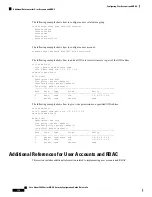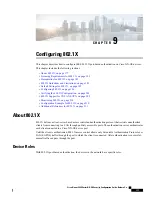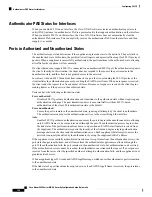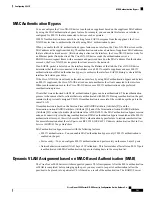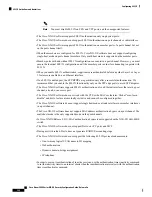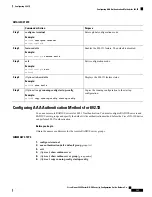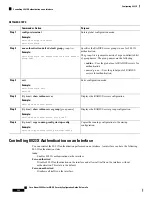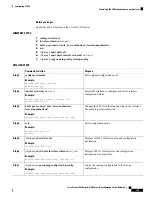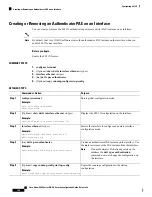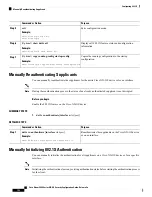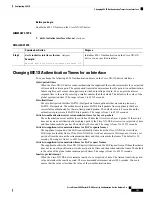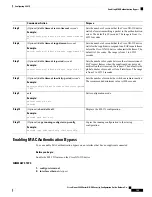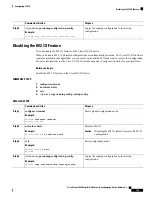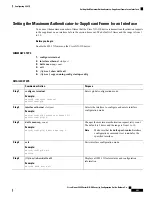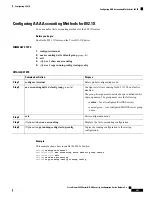
DETAILED STEPS
Purpose
Command or Action
Enters global configuration mode.
configure terminal
Example:
Step 1
switch# configure terminal
switch(config)#
Specifies the RADIUS server groups to use for 802.1X
authentication.
aaa authentication dot1x default group group-list
Example:
Step 2
The
group-list
argument consists of a space-delimited list
of group names. The group names are the following:
switch(config)# aaa authentication dot1x default
group rad2
•
radius
—Uses the global pool of RADIUS servers for
authentication.
•
named-group
—Uses the global pool of RADIUS
servers for authentication.
Exits configuration mode.
exit
Example:
Step 3
switch(config)# exit
switch#
Displays the RADIUS server configuration.
(Optional)
show radius-server
Example:
Step 4
switch# show radius-server
Displays the RADIUS server group configuration.
(Optional)
show radius-server group
[
group-name
]
Example:
Step 5
switch# show radius-server group rad2
Copies the running configuration to the startup
configuration.
(Optional)
copy running-config startup-config
Example:
Step 6
switch# copy running-config startup-config
Controlling 802.1X Authentication on an Interface
You can control the 802.1X authentication performed on an interface. An interface can have the following
802.1X authentication states:
Auto
Enables 802.1X authentication on the interface.
Force-authorized
Disables 802.1X authentication on the interface and allows all traffic on the interface without
authentication. This state is the default.
Force-unauthorized
Disallows all traffic on the interface.
Cisco Nexus 9000 Series NX-OS Security Configuration Guide, Release 9.x
188
Configuring 802.1X
Controlling 802.1X Authentication on an Interface

